Abstract
Ambient monitoring of acid aerosols in four U.S. cities and in a rural region of southern Ontario clearly show distinct periods of strong acidity. Measurements made in Kingston, TN, and Steubenville, OH, resulted in 24-hr H+ ion concentrations exceeding 100 nmole/m3 more than 10 times during summer months. Periods of elevated acidic aerosols occur less frequently in winter months. The H+ determined during episodic conditions in southern Ontario indicates that respiratory tract deposition can exceed the effects level reported in clinical studies. Observed 12-hr H+ concentrations exceeded 550 nmole/m3 (approximately 27 micrograms/m3 H2SO4). The maximum estimated 1-hr concentration exceeded 1500 nmole/m3 for H+ ions. At these concentrations, an active child might receive more than 2000 nmole of H+ ion in 12 hr and in excess of 900 nmole during the hour when H2SO4 exceeded 50 micrograms/m3.
Full text
PDF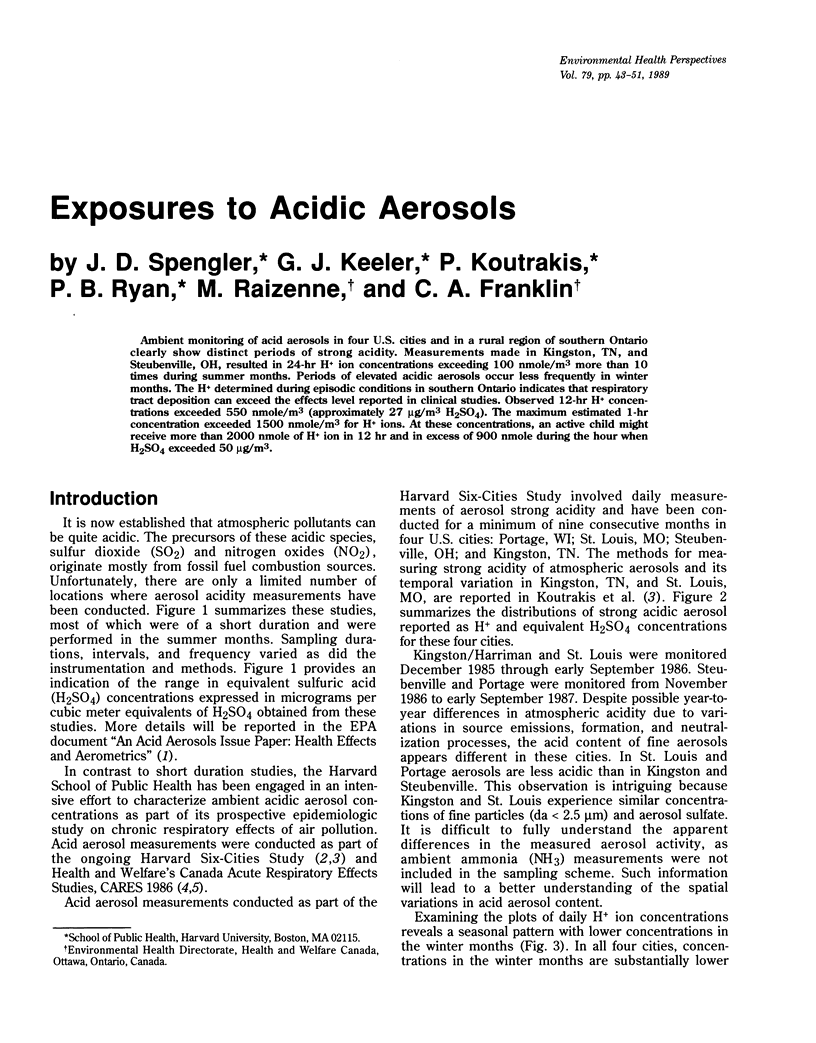
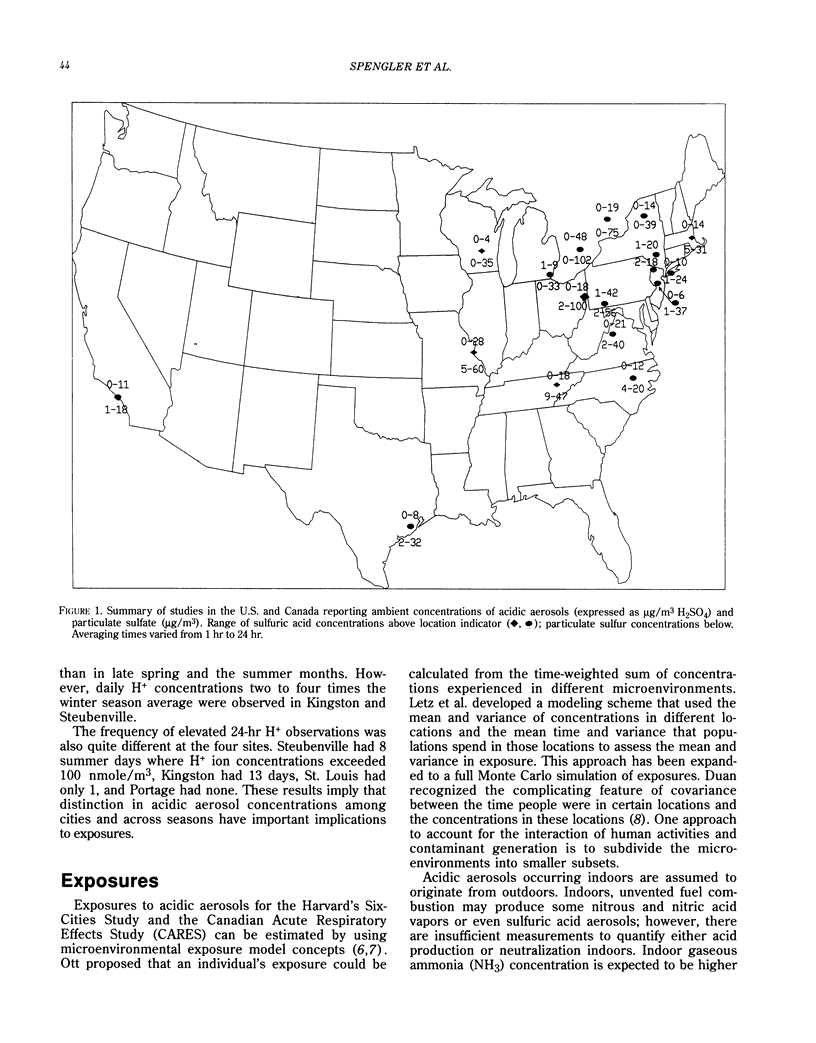
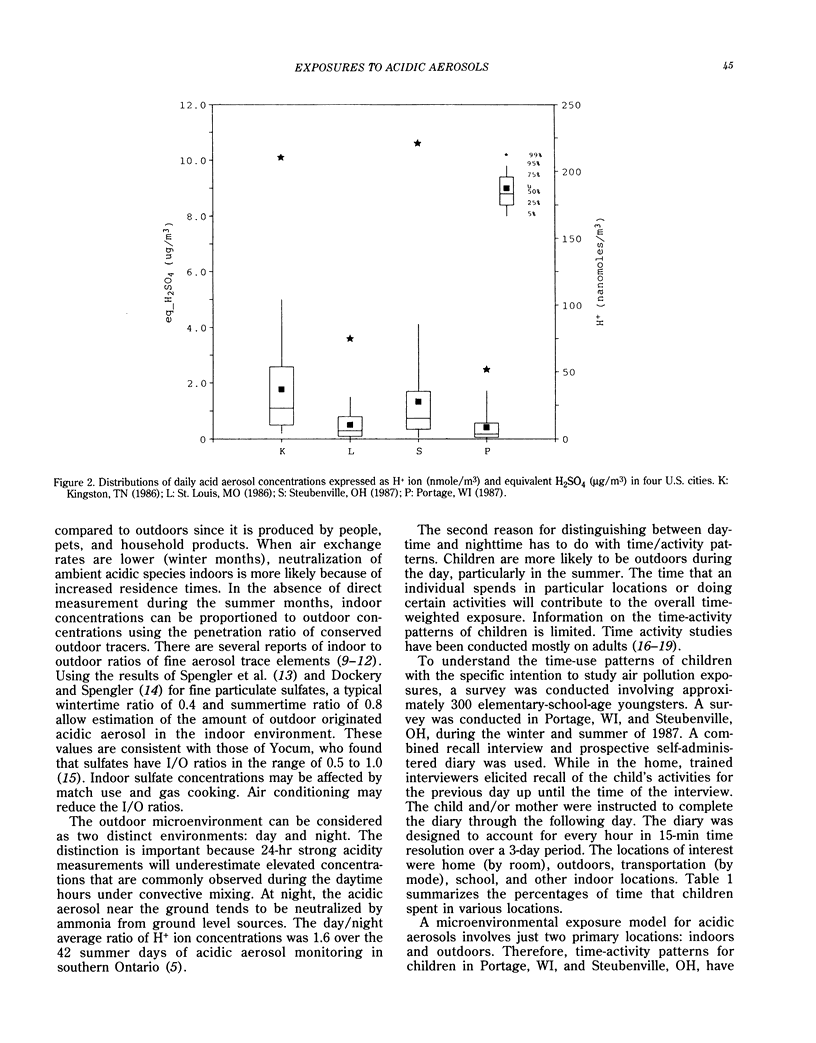

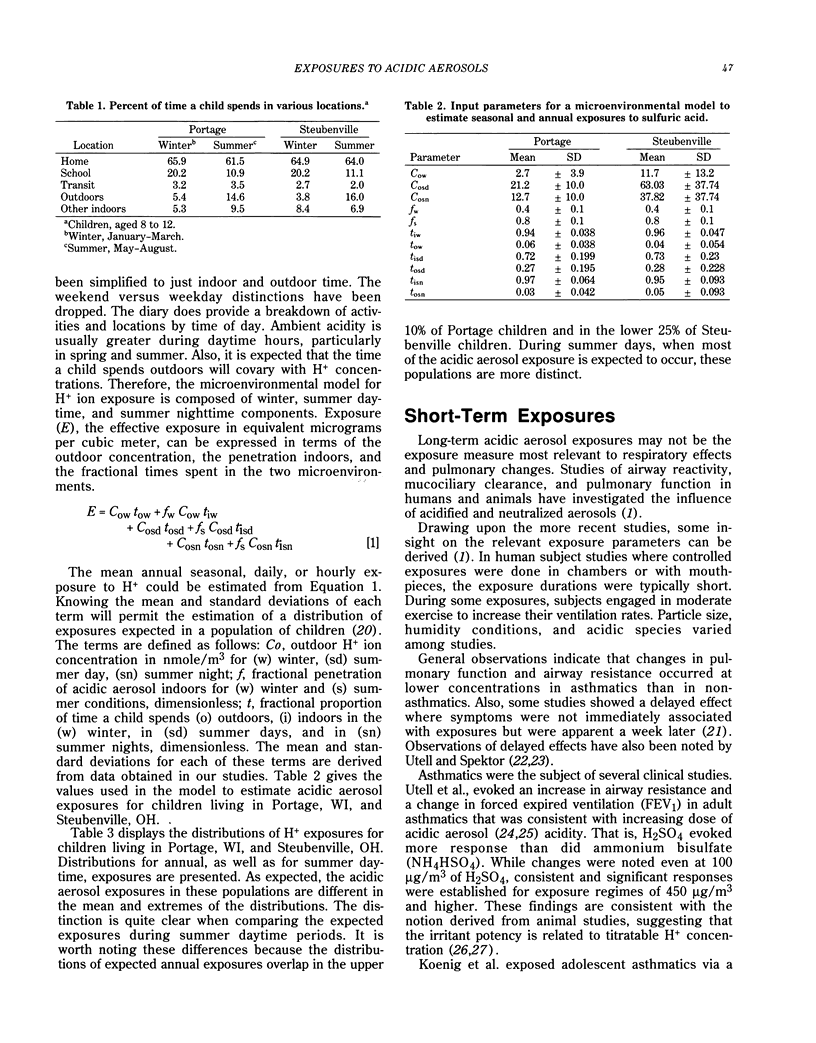
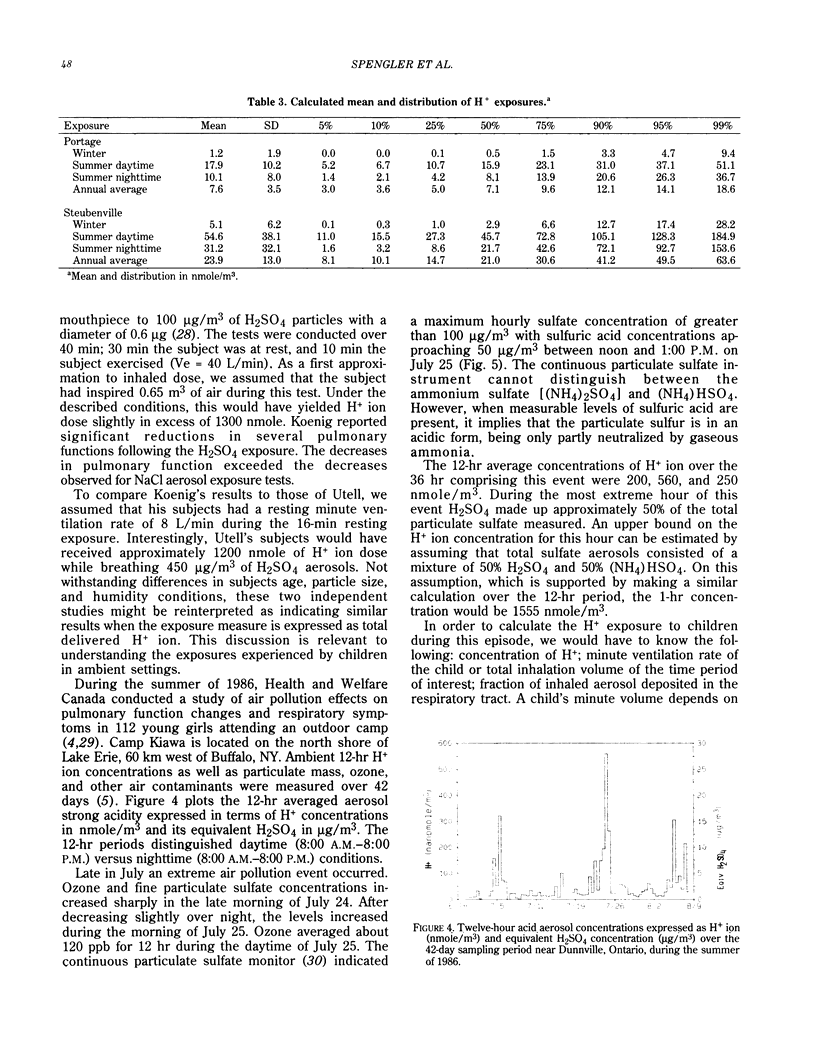
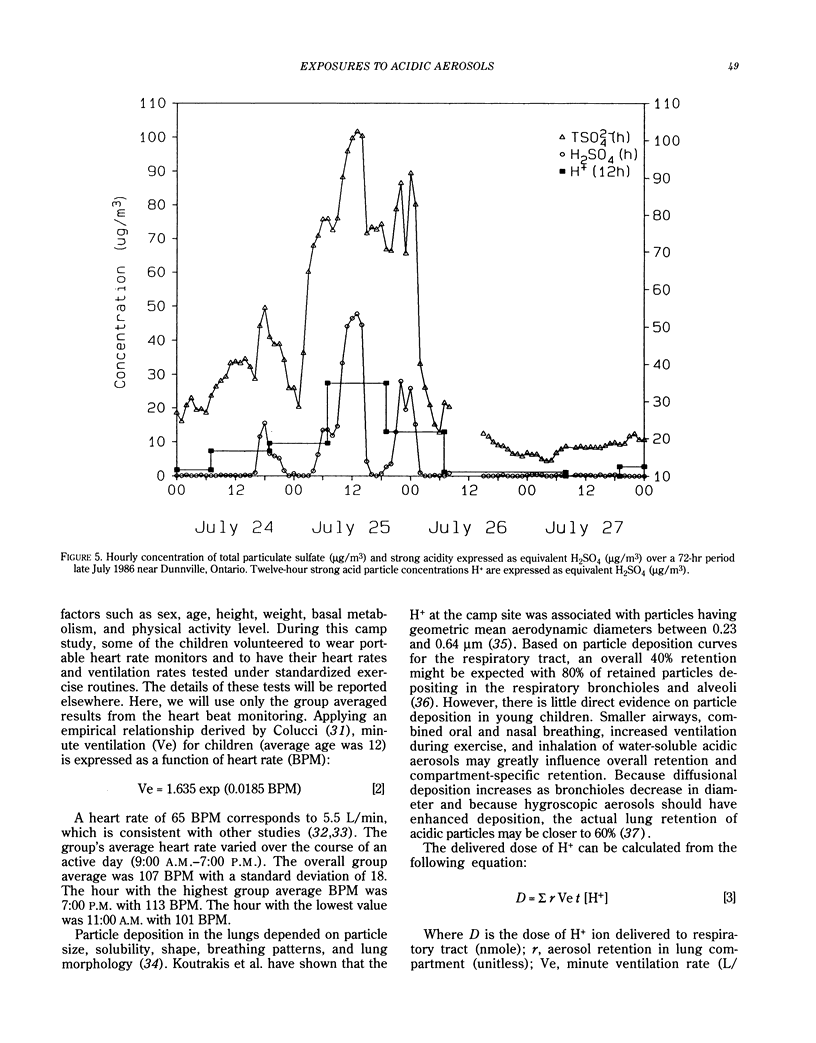
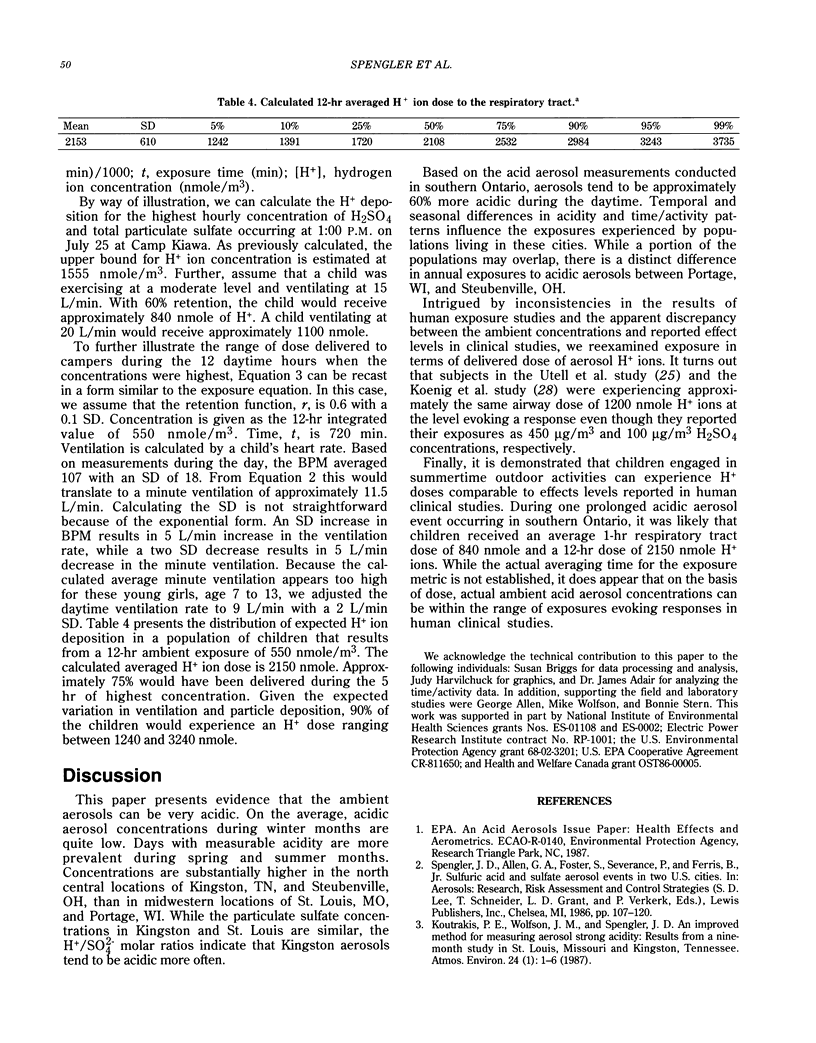
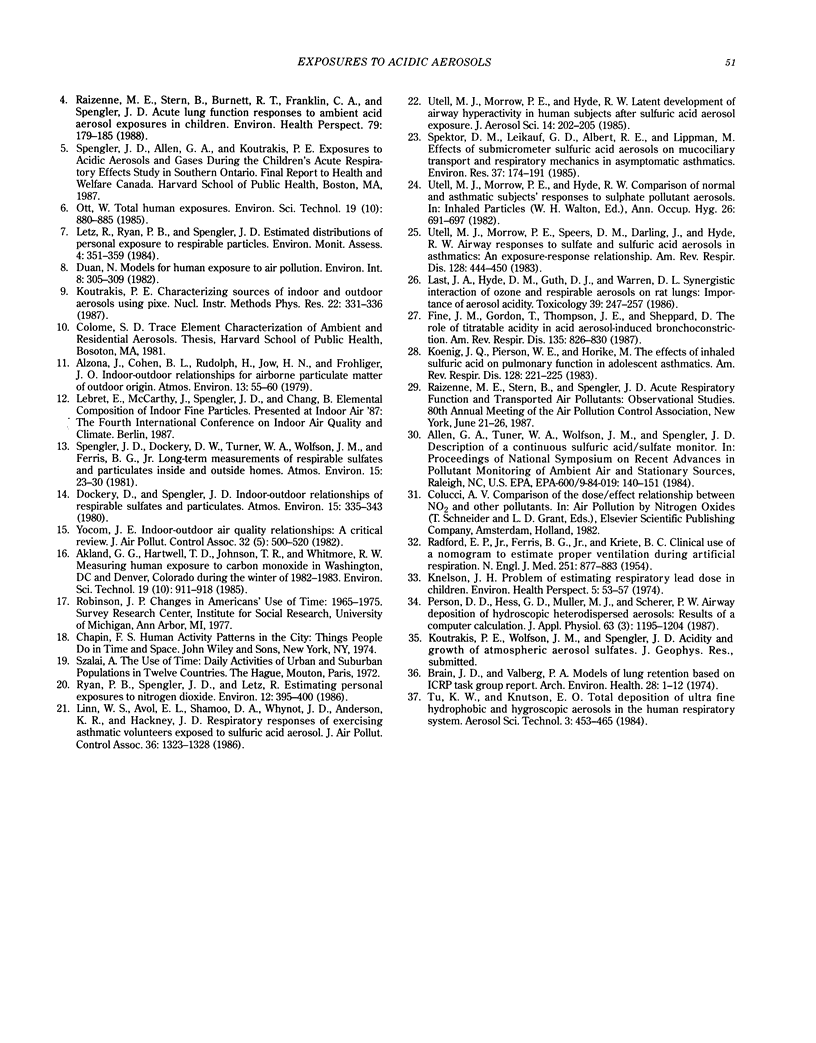
Selected References
These references are in PubMed. This may not be the complete list of references from this article.
- Brain J. D., Valberg P. A. Models of lung retention based on ICRP task group report. Arch Environ Health. 1974 Jan;28(1):1–11. doi: 10.1080/00039896.1974.10666424. [DOI] [PubMed] [Google Scholar]
- Fine J. M., Gordon T., Thompson J. E., Sheppard D. The role of titratable acidity in acid aerosol-induced bronchoconstriction. Am Rev Respir Dis. 1987 Apr;135(4):826–830. doi: 10.1164/arrd.1987.135.4.826. [DOI] [PubMed] [Google Scholar]
- Knelson J. H. Problem of estimating respiratory lead dose in children. Environ Health Perspect. 1974 May;7:53–57. doi: 10.1289/ehp.74753. [DOI] [PMC free article] [PubMed] [Google Scholar]
- Koenig J. Q., Pierson W. E., Horike M. The effects of inhaled sulfuric acid on pulmonary function in adolescent asthmatics. Am Rev Respir Dis. 1983 Aug;128(2):221–225. doi: 10.1164/arrd.1983.128.2.221. [DOI] [PubMed] [Google Scholar]
- Last J. A., Hyde D. M., Guth D. J., Warren D. L. Synergistic interaction of ozone and respirable aerosols on rat lungs. I. Importance of aerosol acidity. Toxicology. 1986 Jun;39(3):247–257. doi: 10.1016/0300-483x(86)90026-0. [DOI] [PubMed] [Google Scholar]
- Linn W. S., Avol E. L., Shamoo D. A., Whynot J. D., Anderson K. R., Hackney J. D. Respiratory responses of exercising asthmatic volunteers exposed to sulfuric acid aerosol. J Air Pollut Control Assoc. 1986 Dec;36(12):1323–1328. doi: 10.1080/00022470.1986.10466181. [DOI] [PubMed] [Google Scholar]
- Persons D. D., Hess G. D., Muller W. J., Scherer P. W. Airway deposition of hygroscopic heterodispersed aerosols: results of a computer calculation. J Appl Physiol (1985) 1987 Sep;63(3):1195–1204. doi: 10.1152/jappl.1987.63.3.1195. [DOI] [PubMed] [Google Scholar]
- RADFORD E. P., Jr, FERRIS B. G., Jr, KRIETE B. C. Clinical use of a nomogram to estimate proper ventilation during artificial respiration. N Engl J Med. 1954 Nov 25;251(22):877–884. doi: 10.1056/NEJM195411252512201. [DOI] [PubMed] [Google Scholar]
- Raizenne M. E., Burnett R. T., Stern B., Franklin C. A., Spengler J. D. Acute lung function responses to ambient acid aerosol exposures in children. Environ Health Perspect. 1989 Feb;79:179–185. doi: 10.1289/ehp.8979179. [DOI] [PMC free article] [PubMed] [Google Scholar]
- Spektor D. M., Leikauf G. D., Albert R. E., Lippmann M. Effects of submicrometer sulfuric acid aerosols on mucociliary transport and respiratory mechanics in asymptomatic asthmatics. Environ Res. 1985 Jun;37(1):174–191. doi: 10.1016/0013-9351(85)90056-8. [DOI] [PubMed] [Google Scholar]
- Utell M. J., Morrow P. E., Hyde R. W. Comparison of normal and asthmatic subjects' responses to sulphate pollutant aerosols. Ann Occup Hyg. 1982;26(1-4):691–697. [PubMed] [Google Scholar]
- Utell M. J., Morrow P. E., Speers D. M., Darling J., Hyde R. W. Airway responses to sulfate and sulfuric acid aerosols in asthmatics. An exposure-response relationship. Am Rev Respir Dis. 1983 Sep;128(3):444–450. doi: 10.1164/arrd.1983.128.3.444. [DOI] [PubMed] [Google Scholar]


